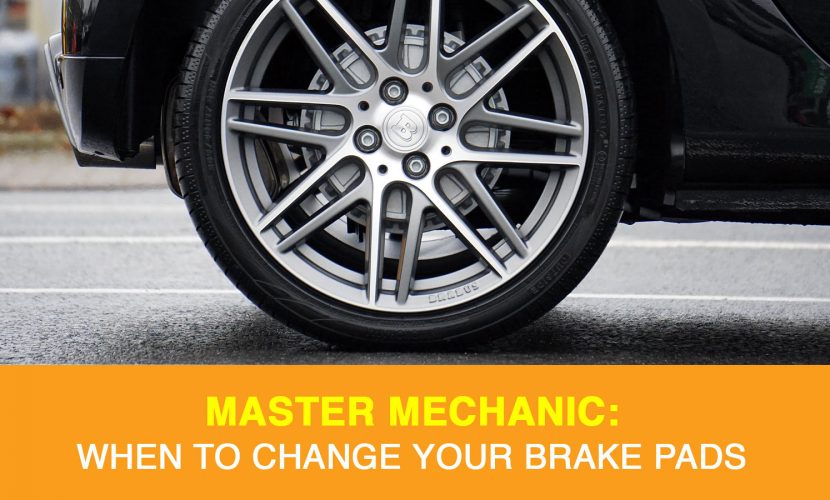You don’t have to be a Master Mechanic to know that your brakes are an integral component in your car. Not only is maintaining your brakes and brake pads in a timely manner cost-efficient, but it is also safer for you, your passengers, and other drivers. But how do you know exactly when it’s time to replace your brake pads? We caught up with a Master Mechanic to talk about brake pads and how to properly maintain them. First, let’s cover the basics. Brake pads sit between your brake shoe and your brake drum. When your brake shoe clamps down to slow the rotation of the tires, the brake pads prevent the friction of any components that could be damaged. Without working brake pads, your brake discs, rotors, and callipers will begin to wear away. So, what are the most common signs it’s time to replace your brake pads? Here’s what to look and listen for. This is the symptom most drivers are familiar with. A squealing noise when applying your brakes is typically the first sign most drivers notice. Contrary to popular belief, the sound you’re hearing isn’t caused by metal brake components grinding. It’s caused by a shim indicator in your brake pad that’s meant to act as an indicator for drivers. If you hear this squealing noise while braking, it’s probably time to bring your car in for service. NOTE: Wet, damp conditions, like rain or snow, can create a thin layer of dust to form on brake pads that can cause a very similar sound to occur. If the squealing sound disappears a bit of driving, it’s probably a bit of rust built up, and not worn brake pads. You may have known that you can hear when your brake pads are worn, but did you know you can see it too? If you peak through your tire spokes, you should see your brake pad compressed against your brake rotor. The pad should be more than about 3 millimetres thick. If not, you should have your brakes inspected soon. If you hear a noise that sounds like metal grinding on metal when applying the brakes, that might mean your brake pads have fully worn away. It’s an indication that your brake discs and callipers are making contact–which could cause further damage. Needless to say, this is unsafe and should be looked at immediately. Many newer high-end vehicles have an indicator light that signals when it’s time to replace the vehicle’s brake pads. You can always differ to your owner’s manual to see if your vehicle is equipped with a low-pad warning system. Brake pads are generally good for about 50,000-55,000 kilometres of driving. This is an estimation, and the answer varies from person to person, depending on driving routes and habits. For example, if you tend to drive in heavy traffic, you’ll be engaging your brakes a lot more than someone who drives on the highway. Some people also tend to brake harder or more frequently, regardless of the route they take. If you suspect it’s time to change your brake pads or want someone to inspect any part of your brakes, don’t hesitate to call your local Master Mechanic…or stop by. Image By TheCarColony Multidemia Double Hoses Fuel Dispenser,Multidemia Double Products Fuel Dispenser,Gasoline Four Products Fuel Dispenser,Diesel Four Products Fuel Dispenser Henan Wenjia Energy Technology Co., Ltd , https://www.hnwjny.com
MASTER MECHANIC: WHEN TO CHANGE YOUR BRAKE PADS
Every time you press the brakes, there is a small amount of wear on your brake pads. This is unavoidable, and exactly what your brake pads are designed to do. Over time, as this coating deteriorates, your brake pads will become thinner, and this is when they’ll need to be replaced.WHEN IS IT TIME TO REPLACE YOUR BRAKE PADS?
SQUEALING NOISES
LESS THAN 3mm OF BRAKE PAD
HEARING
Metal on Metal GRINDING
LOOK
FOR THE SIGNS
WHAT
IS A NORMAL LIFESPAN FOR BRAKE PADS?